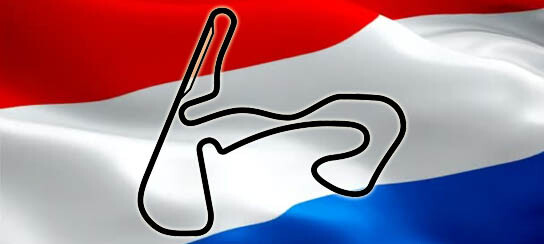BIOGRAPHY
Though a race was held in 1939 at Zandvoort, it was on a street circuit, the purpose built race track didn't come into being until almost a decade later.
The Prijs van Zandvoort was held in August 1948, and while the 1949 event was called the Grote Prijs van Zandvoort, it was 1950 that Zandvoort hosted the the Grote Prijs van Nederland.
The 1952 race was the first to be run as a round of the Formula One World Championship, albeit to F2 regulations like all the European rounds of the championship that year; and again in 1953.
There was no Dutch Grand Prix in 1954, 1956 or 1957, but 1955 saw the first true F1 race as part of the Drivers' Championship.
The Dutch Grand Prix returned to the calendar in 1958 and remained a permanent fixture - with the exception of 1972 - until 1985, when it was held for the last time.
In order to solve a number of problems that had made it impossible to develop and upgrade the circuit, most notably noise pollution for residents of Zandvoort living closest to the facility, the circuit's management developed a plan to move the most southern part of the track away from the estate and construct a more compact version in the remaining former 'infield'.
The plan got the necessary 'green light' in early 1987, when it was formally approved by the Noord-Holland Provincial Council. However, a couple of months later a new problem arose: the company that commercially ran the circuit (CENAV), called in the receiver and went out of business, marking the end of Circuit van Zandvoort.
The circuit, owned by the municipality of Zandvoort, was in danger of being permanently lost for motorsports. However, a new operating company, the Stichting Exploitatie Circuit Park, was formed and started work at the realization of the reconstruction plans.
Circuit Park Zandvoort was the result and in the summer of 1989 the track was relaunched as an interim club circuit of 1.6 miles (2.6 kilometres, while the southern part of the old track was used to build a bungalow park and new premises for the local football and hockey clubs.
In 1995, CPZ (Circuit Park Zandvoort) received the "A Status" of the Netherlands government and began building a circuit for international racing.
The project was completed in 2001, the revised track now 2.7 miles (4.3 kilometres) long, complete with new pits and grandstand.
One of the first events at the 'new' circuit was DTM, was A1GP, as well as the RTL Masters of Formula 3, previously known as the Marlboro Masters. Though a noise restriction order saw the event moving to Zolder for 2007 and 2008, the race returned to Zandvoort in 2009.
In November 2018, on the back of Max Verstappen's continuing success on track, it was reported that Formula One Management had invited the circuit's owners to make a solid proposal for a Grand Prix in 2020.
In March 2019, it was confirmed that a letter of intent had been signed between Zandvoort and FOM to hold a Grand Prix in 2020, but that this was dependent on private funding being secured to cover hosting fees.
On 14 May 2019 it was confirmed that Zandvoort would host the Dutch Grand Prix for 2020 and beyond for a duration of at least three years, with the option to host another two in the future.
The Municipality of Zandvoort will pay four million Euros which will be used so the circuit itself can undergo various changes, such as slight alterations to the track, to bring it up to date with F1 standards, this will include banking the final corner and Hugenholtzbocht.
The circuit's infrastructure is also set to be improved, in particular accessibility.
On 29 August 2019, the Dutch Grand Prix was confirmed as the fifth round on the draft schedule, the first European race of the 2020 season.
It was subsequently revealed that Zandvoort would host the FIA Formula 2 and FIA Formula 3 championships, replacing the series' support races at Circuit Paul Ricard.


